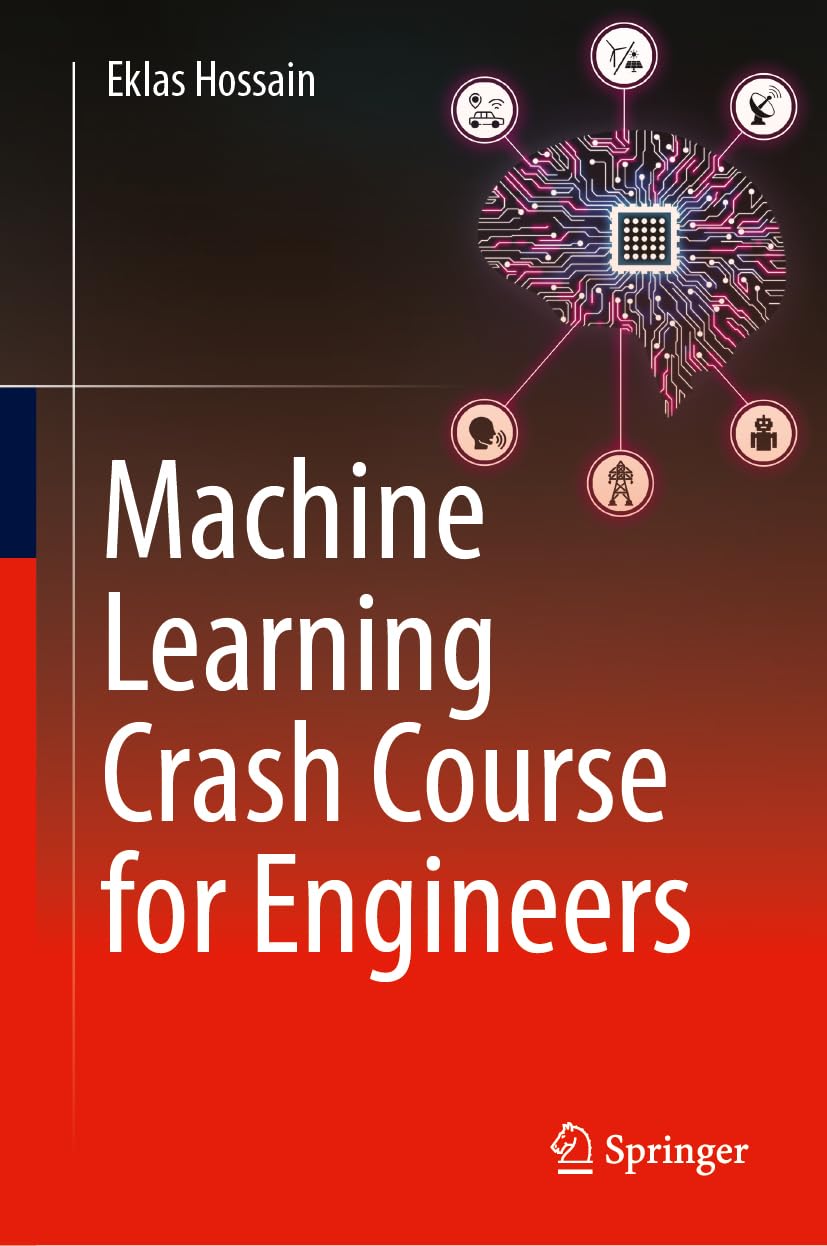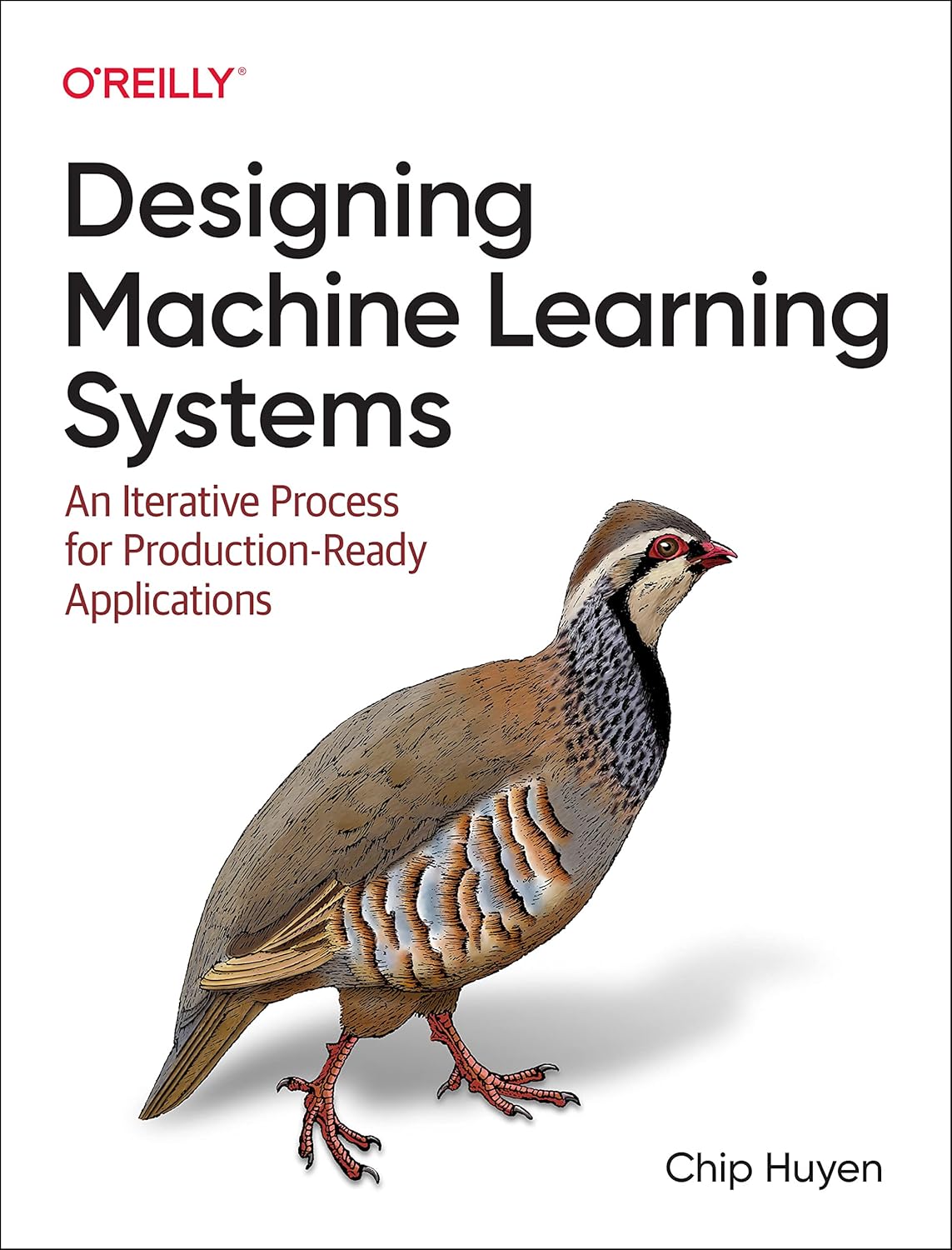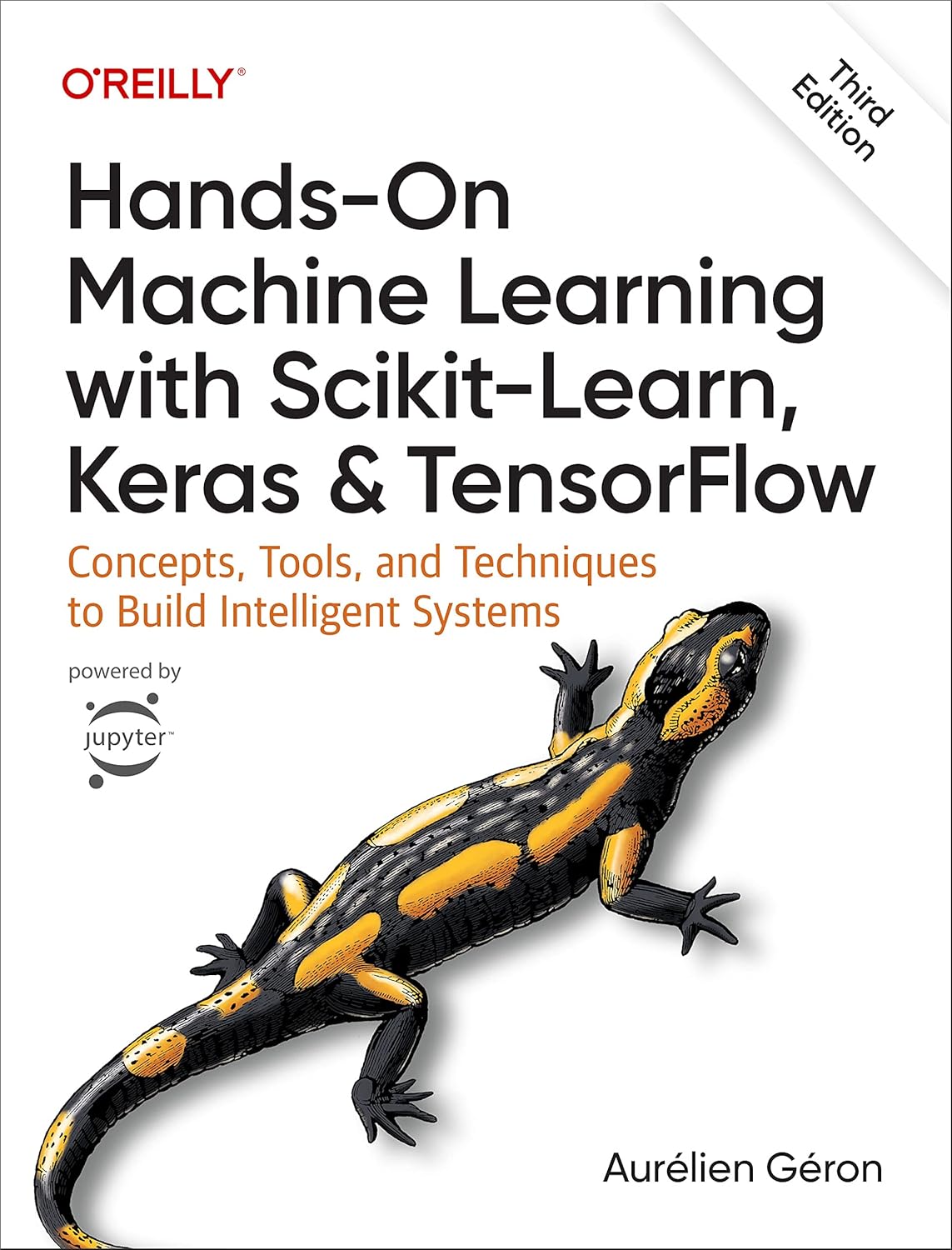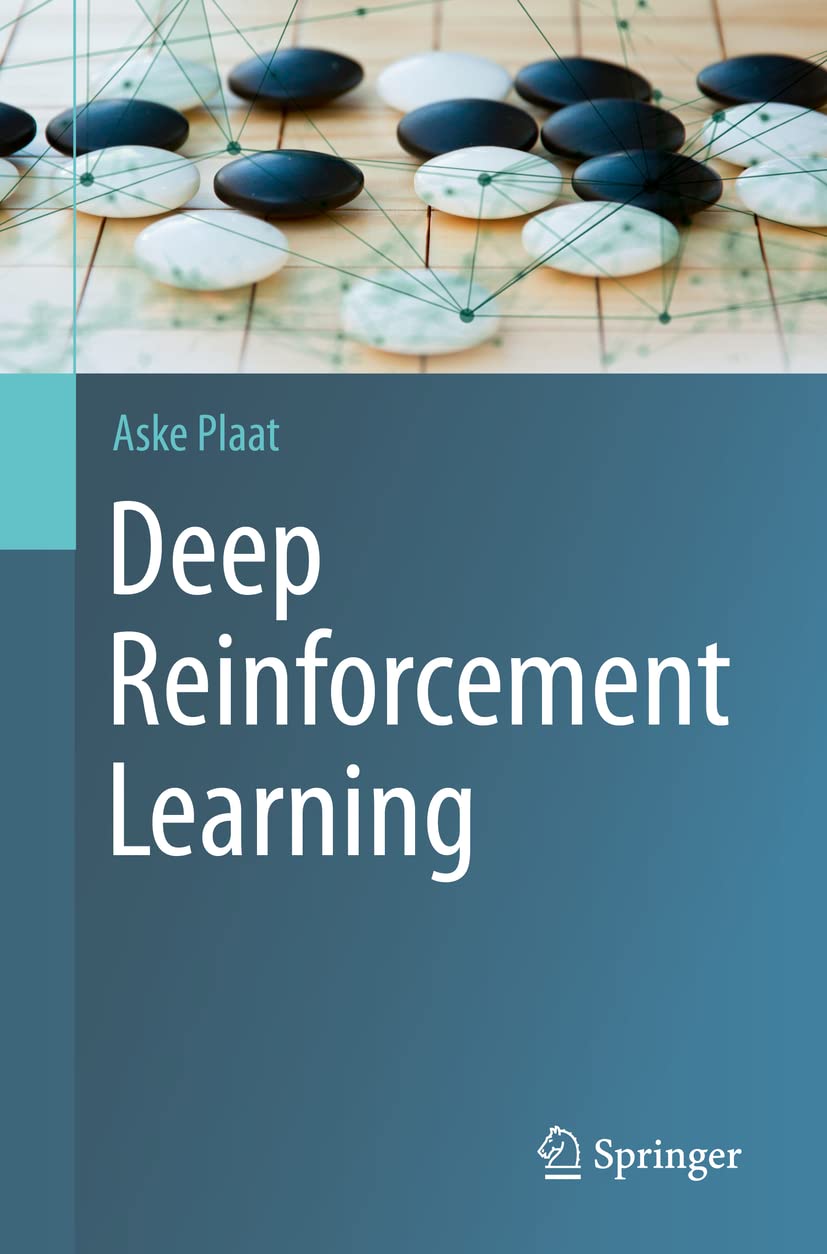Introduction
Artificial Intelligence (AI) is a field of computer science. AI provides methods and algorithms to mimic human intelligence, reasoning, and decision-making and provide insights, which businesses could use in research or industry to build new exciting and innovative products or services. Machine Learning (ML) is a subset of AI with algorithms that learn from data. In this post, we sort out the differences between AI and ML.
Artificial Intelligence and Machine Learning

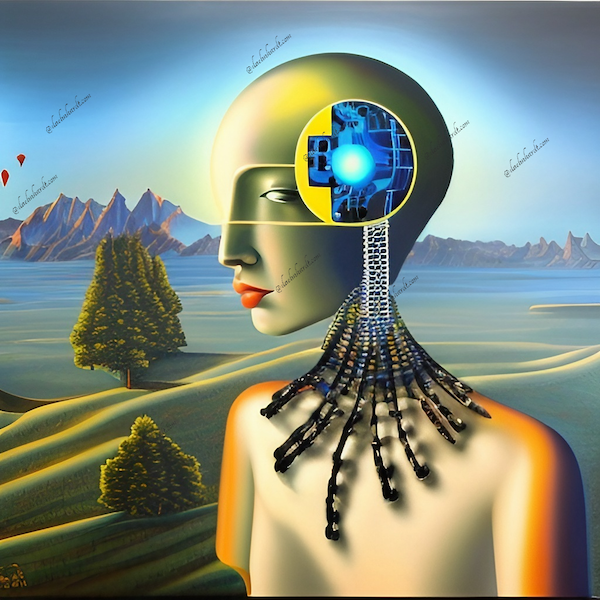
AI-generated Art with Jasper, December 2022
I update this article periodically with new ideas, so click here and save this blog post to your favourite Pinterest board. Pinning it will ensure you can refer to this detailed article later. PIN
I like the concise definition of AI on Wikipedia :
Artificial intelligence (AI) is intelligence demonstrated by machines, as opposed to natural intelligence displayed by animals including humans.
Artificial Intelligence (AI) is a field of computer science. AI provides methods and algorithms to mimic human intelligence, reasoning, decision making and provide insights, which could be used by businesses in research or industry to build new exciting and innovative products or services. For instance, AI can be used to detect tumor cells or anomalies [1], expert systems can help in online hotel bookings, face recognition can be used to unlock your phone screen, and AI bots can lead you through while contacting online help services.
AI agents such as the Roomba vacuum cleaner use sensors for the understanding environment and autonomous decision-making while cleaning your floors. These agents also have actuators that move and control the devices based on the signals received from sensors. When AI agents as physical devices are connected to the Network or The Internet, we come to a broad definition of the Internet of Things (IoT). Ideally, IoT devices exchange data over the network to create intelligent environments such as smart homes or home security systems.
Self-driving cars, chatbot, and recommendation systems are implemented with AI algorithms. Even your coffee machine or dishwasher could contain some algorithms to make the devices user-friendly or “more intelligent.” These are embedded systems built on specialised microprocessors tailored to specific applications. These systems are becoming more complicated and smarter. If you are interested, read on smart cities, homes, IoT, AI and embedded systems in the paper by Per Lynggaard and Knud Erik Skouby (2016) at Complex IoT systems as enablers for smart homes in a smart city vision.
Artificial Intelligence (AI) is a rapidly growing field. These are just a few examples of the most popular AI apps today:
- Digital assistants: Digital assistants, such as Siri, Alexa, and Google Assistant, use Natural Language Processing (NLP) and Machine Learning (ML) to understand and respond to voice commands, answer questions, and perform tasks, such as setting reminders and playing music.
- Recommendation systems: Recommendation systems, such as those used by Amazon, Netflix, and Spotify, use ML to analyze user data and provide personalized recommendations for products, services, and content.
- Image and video recognition: Image and video recognition apps, such as Snapchat, Instagram, and TikTok, use DL algorithms to analyze and manipulate images and videos in real-time, allowing users to add filters, effects, and animations.
- Autonomous vehicles: Autonomous vehicles, such as self-driving cars and drones, use ML and DL to process sensor data and make decisions in real-time, enabling them to navigate and interact with the environment safely and efficiently.
- Healthcare: AI is being used in healthcare for various applications, such as medical imaging analysis, drug discovery, and personalized treatment planning.
- Fraud detection: AI is being used by financial institutions and cybersecurity companies to detect and prevent fraud and cyber attacks.
As AI technology advances, we can expect to see even more innovative applications. More complex systems require more sophisticated and computationally difficult methods, working with enormous amounts of data. History data, system or monitoring logs, user visits, visual data, user inputs, or tags can be used for training AI systems to learn from data.
Machine Learning
Machine Learning (ML) is a subset of AI with algorithms that learn from data. For instance, we can use the previous user purchases data to predict when the user is likely to buy on the following website and recommend the relevant products. Similar systems such as movies or music recommend systems learn from the history user data with the help of Machine Learning (ML) algorithms.
In brief, ML algorithms observe patterns in data and learn from them. We can organize the data by defining features and providing labels to teach algorithms to learn from data. In this case, the input data is structured, and ML algorithms can process this data efficiently when provided with enough computational resources such as disk space, memory, and time. We provide so much data while keeping in mind that there is a tradeoff between how well the algorithm learns from data and how well the algorithm will work with new data sets. In the most extreme case, the algorithm can learn all the data “by heart” and work very severely with cases it does not know yet. To adjust to new data cases, we might need to retrain the model, add new labels or categories. I will write about the data size tradeoffs for machine learning performance optimisation in my next post.
I am affiliated with and recommend the following great ml_books at no additional cost to you.
Here are some examples of Machine Learning algorithm and their applications:
- Linear regression: Linear regression is a simple and widely used ML algorithm that can predict a continuous value, such as a house’s price, based on size and location.
- Decision trees: Decision trees are used for classification and prediction tasks and can be easily interpreted by humans. They are used in many applications, such as credit scoring and medical diagnosis.
- Random forests: Random forests are an extension of decision trees that can improve accuracy and reduce overfitting. They are used in many applications, such as fraud detection and image classification.
- Support Vector Machines (SVMs): SVMs are robust algorithms for classification and regression tasks. They are used in many applications, such as face recognition and text classification.
- Clustering: Clustering algorithms group similar data points based on their features. They are used in many applications, such as customer segmentation and anomaly detection.
The choice of algorithm depends on the task at hand, the available data, and the performance requirements.
If you are interested in research papers, some of the recently studied applications of Machine Learning algorithms include banking supervision with research papers investigating algorithms such as K-Nearest Neighbours
(KNN), support vector machines (SVM), tree-based models and ensemble techniques [2], rheumatoid arthritis prediction with XGBoost [3],
wind energy prediction with Artificial Neural Networks, Support Vector Machines, Regression Trees, and Random Forests [4].
While ML is a powerful approach to AI, it is not the only one. Other approaches to AI include rule-based systems, expert systems, evolutionary algorithms, and fuzzy logic systems. However, ML has become increasingly popular in recent years due to the availability of large amounts of data, faster and cheaper computing power, and advances in algorithms and models, particularly in Deep Learning, which has achieved breakthrough results in many domains.
Deep Learning
Moreover, structured data is not always a “must” when building AI systems. Sometimes it is possible to extract features automatically from data [5]. These are more advanced” algorithms, usually requiring more data and computational resources. Deep Learning, a subset of ML, learns models from data while building a hierarchy of concepts. It creates a “network” similar to the human brain neural network. The Artificial Neural Network (ANN) consists of multiple input, output, and hidden layers, The more layers, the deeper the ANN is. This way, Deep Learning is suitable for complex tasks. A comprehensive and recent survey [5] on Deep Learning applications and methods provides a great explanation of the algorithms, their architecture, and complexity, generalizability, hardware requirements, parameter tuning.
Deep Learning has seen rapid growth and adoption across various industries, and countless applications are available today. Here are some examples:
- Image and video recognition: Deep Learning is widely used for image and video recognition tasks, such as object detection, facial recognition, and gesture recognition. Applications include self-driving cars, security systems, and healthcare.
- Natural Language Processing (NLP): NLP is the field of AI that deals with human language, and Deep Learning has made significant advances in this area. Applications include language translation, chatbots, and sentiment analysis.
- Recommendation systems: Deep Learning algorithms can analyze large amounts of user data to make personalized products, services, and content recommendations. This is used by companies like Amazon, Netflix, and Spotify.
- Fraud detection: Deep Learning can analyze large datasets and identify patterns that indicate fraudulent activity, such as credit card fraud, insurance fraud, and cybersecurity threats.
- Healthcare: Deep Learning analyses medical images, identifies diseases, and develops personalized treatment plans. It’s also being used to create new drugs and treatments.
Is chatGPT by OpenAI also created with Deep Learning technology?
Yes, ChatGPT is created with Deep Learning technology. ChatGPT is a large language model trained by OpenAI, based on the GPT (Generative Pre-trained Transformer) architecture, a type of deep learning algorithm that has shown remarkable performance in many natural language processing tasks, such as language generation, translation, and sentiment analysis.
The GPT architecture consists of a multi-layered neural network that uses a self-attention mechanism to capture dependencies between different parts of a text sequence. The model is pre-trained on a large corpus of text data using unsupervised learning and then fine-tuned on specific tasks with supervised learning.
ChatGPT is one of the most advanced language models available today, with over 175 billion parameters, which enables it to generate high-quality and coherent responses to a wide range of questions and prompts. However, it’s important to note that ChatGPT could be better and may sometimes produce incorrect or inappropriate responses, especially when dealing with sensitive or complex topics.
These are just a few examples of the many applications of Deep Learning. We can expect to see even more exciting applications with ongoing research and development.
Deep Learning versus Machine Learning
Here are five key points that highlight the differences between Deep Learning and Machine Learning:
- Architecture: One of the main differences between Deep Learning and Machine Learning is their architecture. Machine Learning algorithms typically use linear models or shallow neural networks with a small number of layers. In contrast, Deep Learning algorithms use deep neural networks with many layers, allowing them to learn more complex data representations.
- Feature extraction: Machine Learning algorithms often require manual feature extraction, which involves selecting and engineering relevant features from the data. Deep Learning algorithms can automatically learn feature representations from raw data without requiring manual feature extraction.
- Data requirements: Deep Learning algorithms typically require large amounts of data to train, while Machine Learning algorithms can often achieve good results with smaller amounts of data.
- Hardware requirements: Deep Learning algorithms are computationally intensive and often require specialized hardware, such as Graphics Processing Units (GPUs) or Tensor Processing Units (TPUs), to accelerate training and inference, while Machine Learning algorithms can often be run on standard hardware.
- Performance: Deep Learning algorithms have achieved state-of-the-art performance in many domains, such as image recognition, speech recognition, and natural language processing, while Machine Learning algorithms may not be as powerful in complex tasks but can still be effective for simpler problems or when data is limited.
I am affiliated with and recommend these fantastic Deep-Learning Books Books
Conclusion
Artificial Intelligence and Machine Learning are fascinating fields that can potentially change the world as we know it. They provide us with powerful tools to make better decisions, build innovative products and services, and solve complex problems that were previously unsolvable. From healthcare and finance to transportation and entertainment, the applications of AI and ML are endless. By learning about these fields, you are equipping yourself with the knowledge and skills to make a real impact in your industry and society. So don’t be afraid to dive in, explore, and unleash your creativity and imagination with AI and ML. The possibilities are truly limitless!
Disclaimer: I have used chatGPT by OpenAI for updating this post on 12th April 2023.
Did you like this post? Please let me know if you have any comments or suggestions.
Posts about Machine Learning that might be interesting for youBibliography
- Ursuleanu, T.F., Luca, A.R., Gheorghe, L., Grigorovici, R., Iancu, S., Hlusneac, M., Preda, C. and Grigorovici, A., 2021. Deep Learning Application for Analyzing of Constituents and Their Correlations in the Interpretations of Medical Images. Diagnostics, 11(8), p.1373.
- Guerra, P. and Castelli, M., 2021. Machine Learning Applied to Banking Supervision a Literature Review. Risks, 9(7), p.136.
- Messelink, M.A., Roodenrijs, N.M., van Es, B., Hulsbergen-Veelken, C.A., Jong, S., Overmars, L.M., Reteig, L.C., Tan, S.C., Tauber, T., van Laar, J.M. and Welsing, P.M., 2021. Identification and prediction of difficult-to-treat rheumatoid arthritis patients in structured and unstructured routine care data: results from a hackathon. Arthritis Research & Therapy, 23(1), pp.1-10.
- Buturache, A.N. and Stancu, S., 2021. Wind Energy Prediction Using Machine Learning. Low Carbon Economy, 12(01), p.1.
- Alzubaidi, L., Zhang, J., Humaidi, A.J., Al-Dujaili, A., Duan, Y., Al-Shamma, O., Santamaría, J., Fadhel, M.A., Al-Amidie, M. and Farhan, L., 2021. Review of deep learning: Concepts, CNN architectures, challenges, applications, future directions. Journal of big Data, 8(1), pp.1-74.
- Embedded System Definition
- Lynggaard P, Skouby KE. Complex IoT systems as enablers for smart homes in a smart city vision. Sensors. 2016 Nov 2;16(11):1840.

